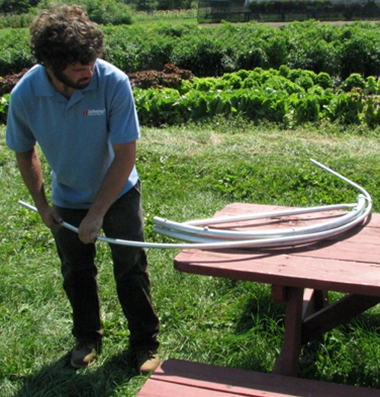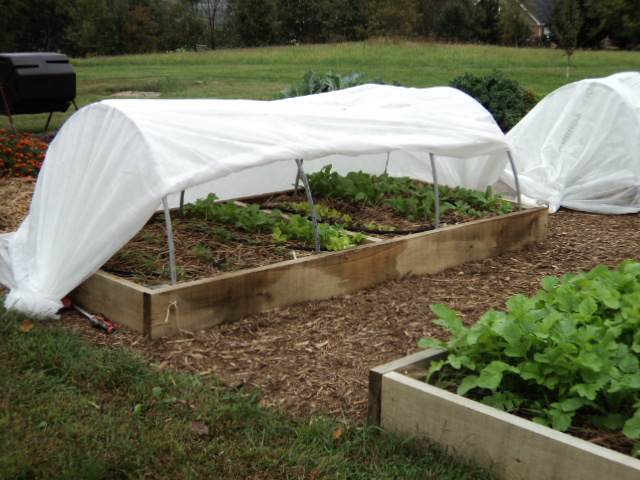As the heat of the summer falls upon us, it may seem strange to start thinking about structures to protect crops from the weather. A versatile structure, however, can do more than just protect crops from the cold. Low tunnels are one option that can be easily modified to provide extra shade for crops during the hottest months or to offer protection from insect pests. They can be constructed to stand on their own, they may be placed inside a larger structure such as a high tunnel to offer an extra layer of protection, or they might be integrated into a raised bed.
Low tunnels, usually standing no more than a few feet in height, allow a grower to cover one or two rows of crops. The cover can be plastic, woven or bonded row-cover fabric, shade cloth, or even insect netting, depending on the needs of the crop. It is held up by a series of hoops, which may be made of anything that can hold the cover up, including sturdy wire, pieces of PVC, or metal electrical conduit. Hoop benders are available to help bend metal conduit to the correct shape.

A hoop bender being used to fashion a hoop from a length of electrical conduit. Photo credit – Johnny’s Seeds
The amount of protection offered by such structures depends heavily on the materials used and the crops being grown. A double layer of plastic or fabric can take most crops through a frost, while a single layer of vented plastic won’t. Some experience with local temperature fluctuations is necessary to make the best decisions.
More complex features can be added if a grower is particularly handy. Pieces of PVC or pipe of a larger diameter than the hoops can be sunk into the ground to provide a more permanent base. Roll-up sides with a crank can be used instead of simply holding the edges down with soil.
Low tunnels may be easily constructed by a single person, and may be constructed of durable and relatively inexpensive materials. They are a good choice for either a beginning gardener who needs to cover only a few row feet, or for a larger garden where the expense of a high tunnel is not called for.
For more information on this topic please see the following publication: Protected Culture for Vegetable and Small Fruit Crops: Types of Structures
- When Grasses Collide – Centipede vs. Bahiagrass in Your Pasture - August 26, 2022
- Time to Think About Pond Weeds - March 18, 2022
- Avoiding Pesticide Resistance - September 24, 2021

